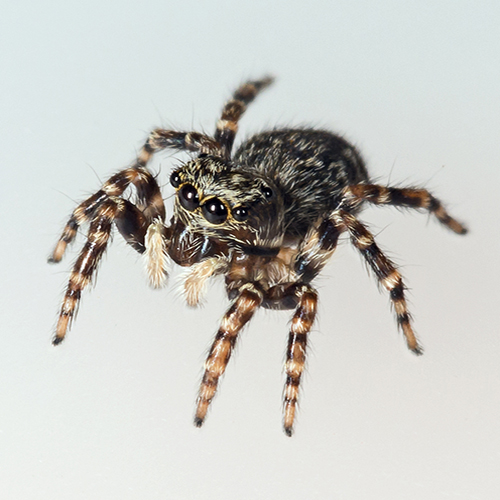
Spider Myth Resources
Explore even more! Additional spider resources and more myths (poor spiders can't catch a break!).
Fact: There are two problems with this idea: a technicality, and a set of false assumptions. First, the technicality. "Poisonous" and "venomous" are two different things. Offhand, I can't think of any spider that is poisonous (harmful to eat, breathe or touch). Mushrooms are sometimes poisonous, but spiders are not; they are venomous (their toxins are proteins and work by being injected, not by being eaten).
Second, we have a set of false assumptions about spider venoms. Almost all spiders are venomous; only two small families lack venom glands. The purpose of spider venom is to subdue the spider's prey, almost always insects. In brief, it's an insecticide. Spider venom does not exist to harm creatures, like humans, that are too large for spiders to eat, and in nearly all cases has little if any effect on humans.
A minority of spider species have venom that can cause localized pain in humans, like the venom of bees or wasps. (Bees and wasps are far more dangerous than spiders, however; wasps cause many deaths annually). Of around 50,000 spider species known, only about 25 (1/20 of 1%) have venom capable of causing illness in humans, to a greater or lesser extent. In any given locality you can expect to find from zero to (at most) three such species. These species are called "medically significant" spiders.
Journalists often refer to some notorious species as being "among the most venomous" or "the world's most venomous." That's nonsense; having venom is a matter of yes or no, and a spider is either venomous or (very rarely) it is not. How toxic the venom is depends on whether you're a human, a mouse, an insect, or...
"Is it poisonous" or "is it venomous?" is not a meaningful question.

Explore even more! Additional spider resources and more myths (poor spiders can't catch a break!).